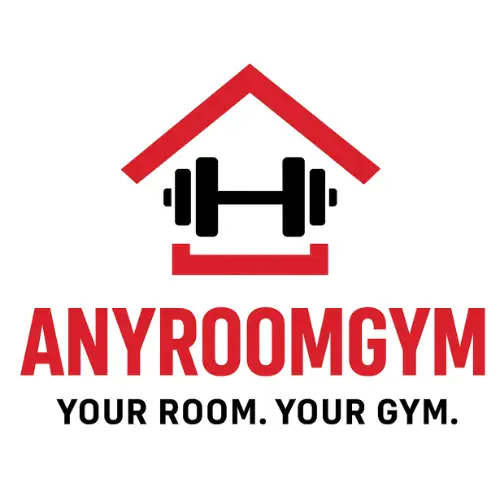Your Barbell is Your Most Important Tool
The Olympic barbell is the iron conduit through which force is transferred from your body to the weight. It is not a generic commodity; it is a precision instrument. Choosing the wrong bar can hinder your performance, compromise your technique, and even lead to injury. The difference between a powerlifting bar, a weightlifting bar, and a general-purpose bar is profound.
This ultimate Olympic barbell guide will make you an expert. We will decode the anatomy of a barbell—knurling, whip, spin, and tensile strength—so you can move beyond marketing and make an informed decision. Whether you need a bar for deadlifts or a barbell for Olympic lifting, this guide ensures your most important tool is perfectly matched to your training.
1. Anatomy of a Barbell: The 5 Key Specifications
- Tensile Strength (PSI): This measures how much stress the steel can take before permanently deforming. 190k PSI+ is good for general use. 205k PSI+ is excellent for heavy powerlifting. A higher PSI means a more durable bar that will resist bending.
- Knurling: The machined pattern on the shaft provides grip.
- Aggressiveness: A deeper, sharper knurl is ideal for powerlifting (e.g., deadlifts). A moderate knurl is better for weightlifting where you need to reposition your hands quickly.
- Knurl Marks: The rings on the shaft denote legal grip positions for competition.
- Whip (or Flex): The bar’s tendency to bend under load.
- High Whip: Essential for Weightlifting Bars. The whip helps Olympic lifters get under a heavy clean & jerk.
- Low Whip: Essential for Powerlifting Bars. Stability is key for heavy squats and bench presses.
- Sleeve Spin: How freely the sleeves that hold the weight rotate.
- Fast Spin: Needed for Weightlifting Bars to reduce torque on the wrists during the snatch and clean.
- Slow Spin: Preferred for Powerlifting Bars to keep the plates stable during slow, heavy lifts.
- Finish: The coating that protects the bar from rust.
- Bare Steel: Best feel but requires constant maintenance to prevent rust.
- Zinc: Good rust resistance and a classic look.
- Cerakote/Stainless Steel: Excellent rust resistance and durability, but comes at a premium price.
2. The 3 Main Types of Olympic Barbells
| Bar Type | Primary Use | Key Features | Best For |
|---|---|---|---|
| Powerlifting Bar | Squat, Bench, Deadlift | Stiff (low whip), aggressive knurling, 29mm diameter, slow sleeve spin | Powerlifters, strongman, general heavy lifting |
| Weightlifting Bar | Snatch, Clean & Jerk | Whipy (high flex), 28mm diameter, passive knurl, bushing or bearing sleeves for fast spin | Olympic weightlifters, CrossFit |
| Multipurpose / CrossFit Bar | Varied Functional Training | Moderate whip, aggressive knurling, bronze bushings for decent spin | CrossFit, general fitness, garage gyms |
3. Top Barbell Brands & Recommendations
- The All-Rounder: Rogue Ohio Bar (Cerakote or Bare Steel). The gold standard for a do-it-all bar. It’s tough enough for powerlifting and has enough spin for weightlifting.
- The Powerlifter’s Choice: Rogue Ohio Power Bar or Texas Power Bar. Stiff, aggressive knurling, and built to handle massive loads without bending.
- The Weightlifter’s Choice: Rogue Olympic WL Bar or Eleiko IWF Weightlifting Bar. The pinnacle of whip and spin for the competitive Olympic lifter.
- The Value King: REP Fitness Gladiator Bar or Fringe Sport Wonder Bar. Incredible quality and specs for a fraction of the price of premium bars.
4. Barbell Maintenance 101: Protect Your Investment
A good bar can last a lifetime if cared for.
- Always store it in a cool, dry place. Use a vertical bar holder or wall mount.
- Never let chalk build up in the knurling. Use a stiff brush to clean it regularly.
- For bare steel bars: Wipe down with an oily cloth (3-in-1 oil) after every use to prevent rust.
- For coated bars: Wipe down with a dry cloth. A light silicone spray on the sleeves can help maintain spin.
Conclusion: The Centerpiece of Your Strength
Your Olympic barbell is the centerpiece of your home gym. It is the tool you will touch every training day. By understanding the critical differences in design and purpose, you can invest in a bar that not lasts for decades but actually enhances your performance. Don’t buy a generic bar; choose a specialist tool for your specific goals.
You have your rack and your bar. Now it’s time to put it all together. Our final guide provides the ultimate integrated workout program designed specifically for a home gym strength athlete. [Internal Link to Final Workout Program Article]
